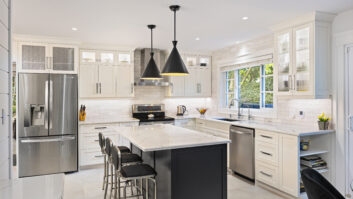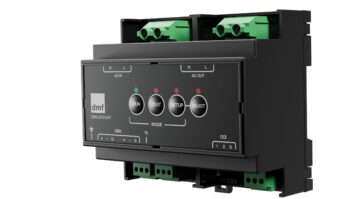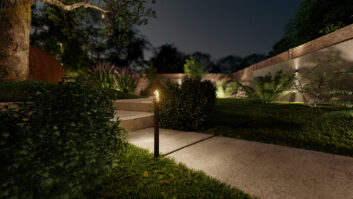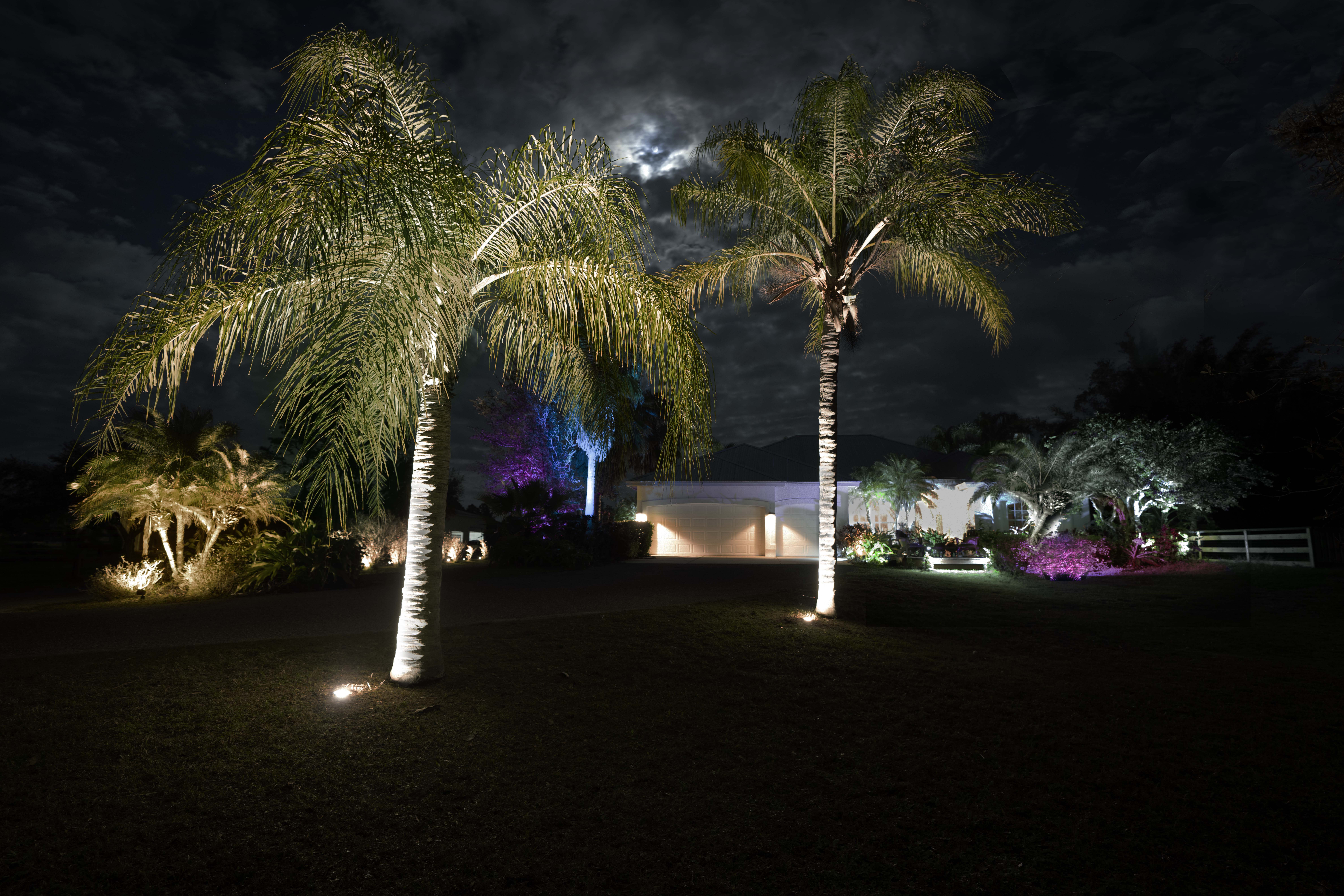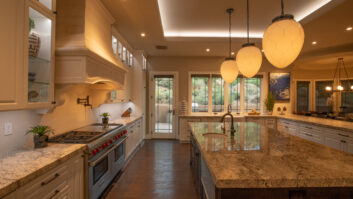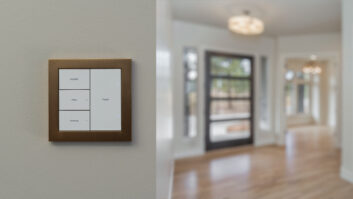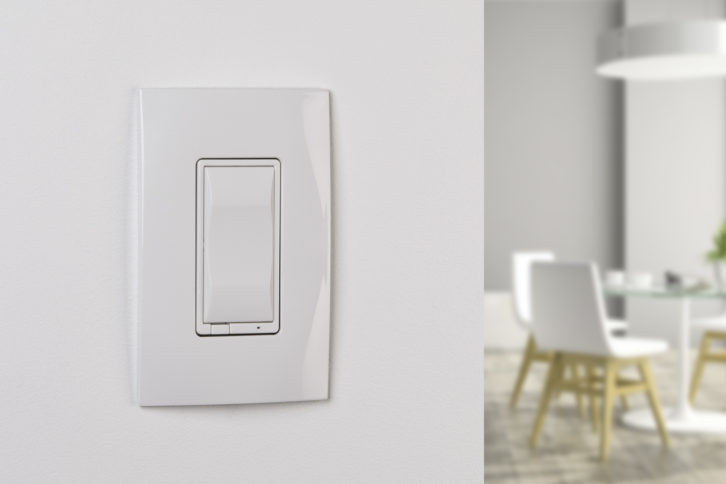
For many homeowners, a smart lighting system is frequently the gateway drug into going with full-blown automation. I mean, if you can’t get homeowners to bite on automating their lights, then talking about any other smart features is likely going to be a non-starter. And once someone has lived with a smart lighting system and gotten a taste of the lifestyle enhancements, going back would almost be like asking them to give up their smartphone.
The problem with smart lighting systems, especially when it comes to that first-time buyer, is the initial sticker shock. If you’ve ever meandered down the electrical aisle at a Lowe’s or Home Depot, you’ve doubtless seen the numerous lighting control options available for about $5 (or less!) a switch. So, when your automated lighting proposal comes in at $150–200 per device, this creates that uncomfortable, “Are you kidding me?!” moment. When you consider that even a modest-sized home likely has 30 or more lighting devices, that sticker shock can turn into sticker rage. Rather than just trimming back on the number of switches to hit a more acceptable budget, usually the homeowner just scrubs the entire lighting system — if not the entire project (with your company).
And, let’s be honest, the customer has a valid point. The modern dimmer was invented over 60 years ago (thank you, Joel Spira!), and with the immense variety of technologies available in the 21st Century, a light dimmer shouldn’t have to cost upwards of $200 no matter how smart it is.
That, in a nutshell, is the story behind the introduction of Control4’s new Essential Wireless Lighting models, which the company designed to address four key dealer lighting “pain points”:
- Dealers often don’t even propose smart lighting because they just assume it will be too expensive.
- Some dealers just give away some smart lighting devices on a job, convinced that customers will return to buy more after living with it.
- Even when smart lighting is used on a project, often it is just for a portion of the home.
- Give dealers another opportunity to increase the potential size of every job along with adding system benefits to the customer.
Instead of a replacing Contol4’s existing Wireless Lighting family, Essential models augment it with a lower-cost solution. How much less? How does 40 percent sound?
Such a significant price drop meant trimming some features, so you’re likely wondering what you and your customer give up when going to Essentials. Well, there is now only a single Blue LED at the bottom of the device, instead of the dual full-RGB colors on the Wireless devices, and there’s no button backlighting. Unlike the other Control4 models, Essential models can’t be engraved, and only come in four color options. The Essential line also has less memory, and the dimmers handle slightly less wattage.
Functionally, what will these things mean on the majority of your installs? Honestly, very little.
Will the fact that you can only use an Essential device in 80 lighting scenes instead of 1811 limit you? Or that it can only be in 16 lighting groups instead of 64? Honestly, I didn’t even know what a lighting group was, so probably not.
If the majority of your smart lighting systems use white, light almond, or black colors, then there is likely a place for Essentials on every one of your Control4 installs. The Essential models are especially perfect for those out-of-sight installs where customers are planning on relocating dimmers and switches into closets and other non-visible areas (what we call “switch cleanup”) and controlling them using keypads, touchpanels, sensors, or smart devices. And even if a homeowner isn’t ready to commit to fully automating all of the lighting in the home, they should at least do the essential (see what I did there?) areas, like key bedrooms, family room, kitchen, outdoor lighting, home theater, etc.
The Essential family currently includes three in-wall devices: forward-phase dimmer, switch, auxiliary keypad (for 3-/4-ways), plus an plug-in outlet dimmer, and plug-in outlet switch. The biggest omission is an Essential keypad, but, remember, any existing Control4 lighting device can interface with and control Essential devices, but it would have been nice to have a less expensive Essential keypad to offer.
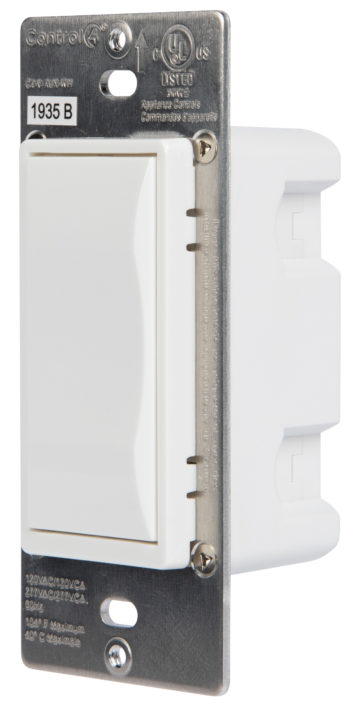
Control4 sent me six dimmers, three switches, and one plug-in outlet dimmer to augment the Control4 and Lutron RadioRA2 lighting systems already installed in my home. Now, I’m no stranger to installing lighting devices; I’ve installed/un-installed/re-installed smart lighting devices around my home numerous times, and I have to say, it never gets any easier. In fact, it suck-diddily-ucks.
My strong suggestion on any new smart lighting job is to get in good with the electrician early on and ask him to use deep wall-boxes throughout the project and tell him that you’ll provide him with the smart devices to install, and then you just need to activate and program them. Removing and re-installing devices is much more difficult after the electrician has tied all of his wiring in. And as one electrician told me recently, “When I put the switches in, I do it for it to be forever, so it isn’t easy to pull them out and replace them with something else.”
Having said that, if you do have to replace old switches, the Essentials make it about as “easy” as possible. (Oh, I’m not saying it was a curse-free install by any means, but that’s just the nature of dealing with the stiff, unrelenting nightmare that is Romex.) Instead of bare wire leads and wire nuts, you have colored screw terminals along with in/out holes on the back for connecting line, load, ground, neutral, and traveler wires. These in/outs make wiring multi-gang boxes easier, letting you share neutral, line and ground in a cleaner manner and making it easier to push everything back into the box so it sits flush.
Control4 did us all a favor by giving the dimmer and switch a pretty solid metal plate construction that lets you put a good amount of pressure and push on them as you try and coerce all that wiring back into place. Also, complete the look of the install by going with screwless plates. They not only look much more modern and finished, they allow an extra bit of wiggle room to get all the screw holes aligned.
Once installed, powered on, and working correctly, you add the Zigbee-enabled Essential devices to the project. Nothing beats Composer Express when it comes to adding lighting to a project. Simply open the app, put it into “add new Zigbee devices mode,” and then four-tap the device. Composer Express automatically identifies the device and adds the correct driver to the project, letting you quickly add it to the right room and name it. Since these are all full Zigbee repeaters, they also help you create a strong mesh network throughout the home.
After the devices are added to the project, you can go into Composer and make some nice customizations to the dimmers and switches. For example, you can program the behavior for both buttons; whether to turn the load on/off, toggle the load, or act as a programmable keypad button. You can also set the preset on level, whether or not it turns on to the last level, how fast/slow it ramps up and down, how the LED reacts and whether it blinks when ramping, etc.
To control a wide range of dimmable LEDs, the Essential dimmers also let you set cold start values, min./max. dimming ranges, speed of dimming, and set the dimming curve for the smoothest ramp. Because changes are made in real-time in Composer, you can check your adjustments instantly to find the ideal settings for your customer’s bulbs, ensuring a smooth, flicker-and-buzz-free operation.
Both dimmer and switch also have a cool “enable auto off” option. When enabled, you can tell it how many seconds to stay on before automatically turning off. This is perfect for something like a bathroom fan where you might want to leave the fan running for a bit or for a closet light that might be forgotten.
You can also add the devices to any lighting scenes, keypad button presses, timeclock event, sensor input, trigger, or other. I have several Lutron RA2 keypads around my house, and the Essentials devices respond perfectly to these controls, whether individually or when firing off advanced lighting scenes.
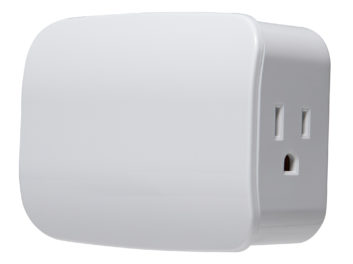
We have two bedside lamps that never got used, but now with the plug-in dimmer, I have a keypad button that turns them on/off for reading stories to my daughter, and then I ask Alexa to set the bedside lamps to 25 percent while she is falling to sleep. One thing to note is, unlike the regular outlet dimmer Control4 offers which has two independently controlled outlets, both outlets on the Essentials products respond as one.
There will still be times when you’ll want or need to use Control4’s “regular” Wireless Lighting models. Say, if you need the full RGB LED feedback, have a lighting load that needs an adaptive phase or 0–10V dimmer, or a fan speed controller, need to have button engraving, or use a wider color palette for the devices. But even then, the new Essential line-up can round out the project, helping you get into more areas of the home.
Bottom line, the Essential Wireless Lighting lineup gives dealers a powerful new tool to not only offer, but to close more smart lighting installs; making more sales, more money, and more happy clients. And that is a very bright idea all around.
888-400-4070 / CONTROL4.COM
Kudos: Greatly lowers entry cost of automated lighting; meshes with existing Control4 systems
Concerns: Would love an Essentials-priced keypad
Product Specs:
- Essential Wireless Lighting includes forward-phase dimmer, switch, auxiliary keypad (3-/4-way), plug-in outlet dimmer, and plug-in outlet switch
- Available in gloss: white, light almond, black; matte: snow white
- Single adjustable blue LED
- Includes Zigbee radio receiver/repeater
- Dimmer supports 600W/500W/400W/300W (1 gang, 2 gang, 3 gang, LED)
Want more stories like this delivered to your inbox every day? Then sign up for the free Residential Systems eNewsletter here.
